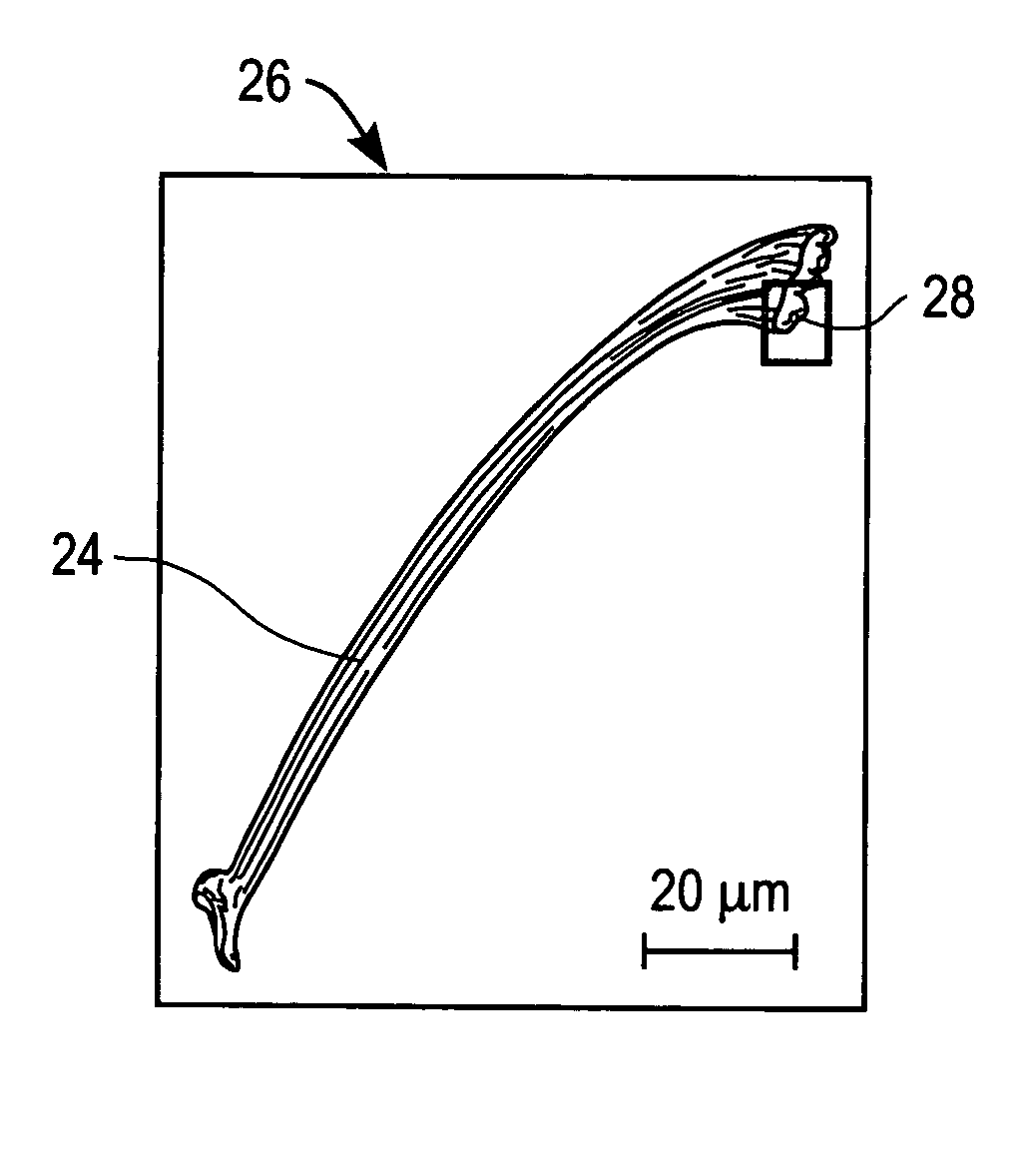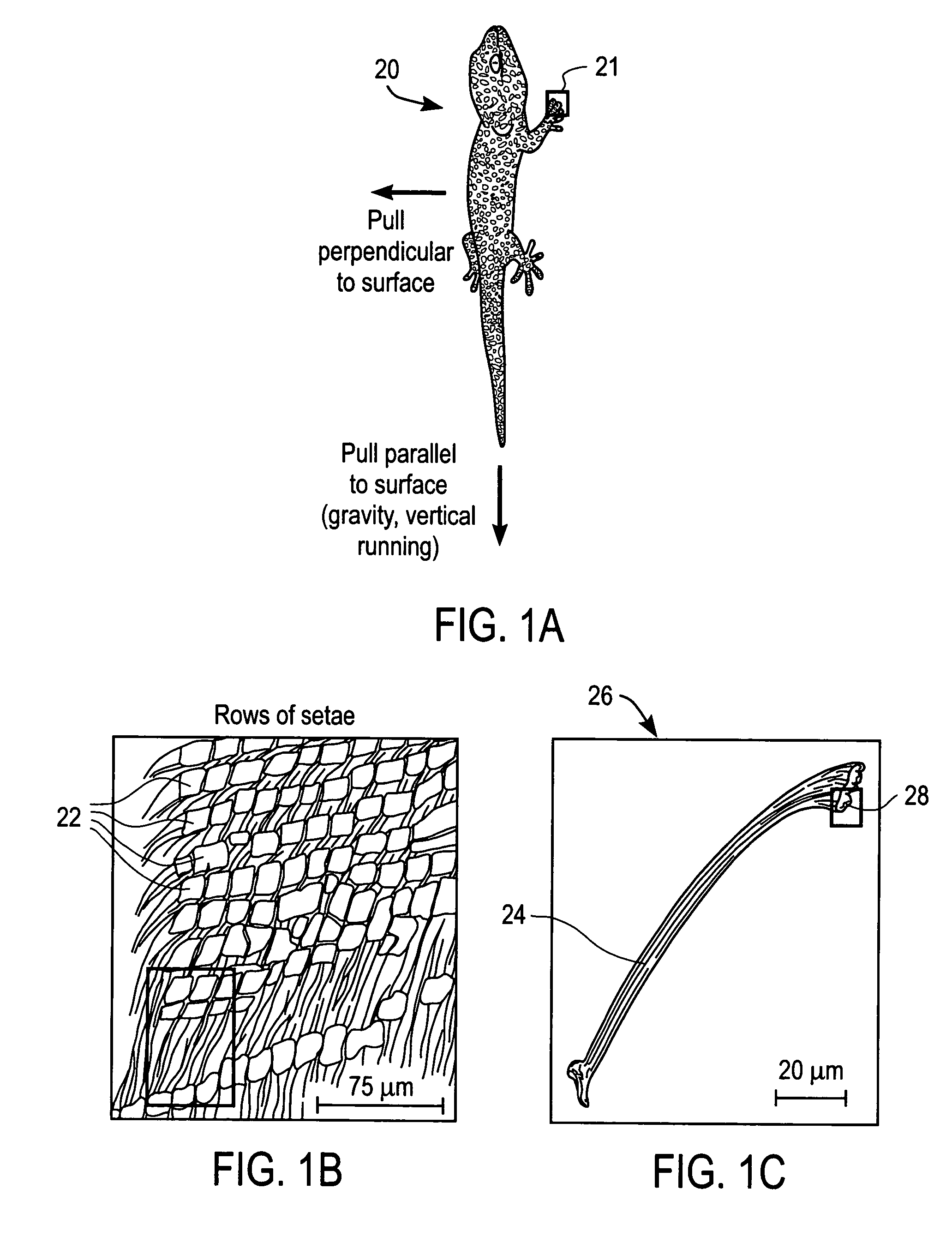Adhesive microstructure and method of forming same
a technology of adhesive microstructure and adhesive, applied in the field of adhesive microstructure, can solve the problems of not fully understanding or exploiting the adhesion mechanism in nature, prior work does not identify the operation of seta, and fails to identify the use of seta to perform useful work
- Summary
- Abstract
- Description
- Claims
- Application Information
AI Technical Summary
Benefits of technology
Problems solved by technology
Method used
Image
Examples
Embodiment Construction
[0035]The invention is directed toward the use of micron scale structures to achieve adhesion. In particular, the invention uses a seta structure. The seta structure has a shaft. Positioned at the end of the shaft is a spatula or an array of spatulae. Adhesion is produced as the spatula or array of spatulae produce intimate contact with a surface.
[0036]In general, the shaft is between 1 and 500 microns long, preferably approximately 10 to 100 microns long. The diameter of the shaft is preferably between 0.01 and 0.1 times the length of the shaft, preferably approximately 0.05 times the length of the shaft.
[0037]The terminal end of the shaft has at least one spatula. Preferably, the terminal end of the shaft has between 1 and 1000 spatulae. The array of spatulae is preferably less than 10 microns wide, preferably approximately 1 micron wide. Preferably, each spatula of the array of spatulae has an extended surface at its terminal end. The extended surface may be in the form of a padd...
PUM
| Property | Measurement | Unit |
|---|---|---|
| width | aaaaa | aaaaa |
| forces | aaaaa | aaaaa |
| force | aaaaa | aaaaa |
Abstract
Description
Claims
Application Information
 Login to View More
Login to View More - R&D
- Intellectual Property
- Life Sciences
- Materials
- Tech Scout
- Unparalleled Data Quality
- Higher Quality Content
- 60% Fewer Hallucinations
Browse by: Latest US Patents, China's latest patents, Technical Efficacy Thesaurus, Application Domain, Technology Topic, Popular Technical Reports.
© 2025 PatSnap. All rights reserved.Legal|Privacy policy|Modern Slavery Act Transparency Statement|Sitemap|About US| Contact US: help@patsnap.com



